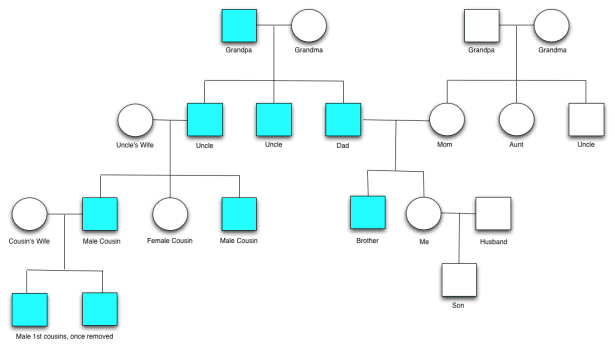Editor’s Note: This post does not reflect our current product offering. 23andMe’s ancestry product looks at the autosomes (chromosomes 1-22), the sex chromosomes (XY), and mitochondrial DNA (mtDNA). For more information about how results are different for men and women go here.
One of the most exciting parts of 23andMe’s 
Paternal vs. Maternal
At present, 23andMe customers can trace two branches of their genetic family tree — one that follows the all-female line on the maternal side (through mitochondrial DNA) and another the all-male line on the paternal side (through the Y chromosome).
Not all DNA is created equal, however: males have both mitochondrial DNA AND a Y chromosome, so they can trace both their maternal and paternal ancestry. Females, who have mitochondrial DNA but no Y chromosome, can trace only their maternal ancestry.
So how can females discover their paternal history? One solution is to ‘borrow’ the Y chromosome of her most immediate paternal ancestor — her father. A female can have her father send his own DNA sample to 23andMe, then examine his Y chromosome as a way of understanding his paternal ancestry and her own.
Discovering Paternal Ancestry
But what if a woman’s father can’t or won’t share his DNA? By sharing 23andMe accounts with the right male relative, a woman can still discover both her maternal and paternal ancestry.
So whose DNA can a female customer use, besides her father’s? It could be anyone who shares his Y chromosome — her brother, paternal uncle (father’s brother), or even paternal grandfather (father’s father). The chart below illustrates some of the possibilities in one woman’s family tree; male relatives who share her father’s Y chromosome are depicted in blue.
You may look at the chart and ask: Why not her son’s Y? After all, he’s a male relative, too. But even though a mother shares 50% of her genes with each of her children, only fathers pass Y chromosomes to their sons. So any examination of her son’s Y chromosome would yield not her father’s paternal history, but her husband’s.

The woman whose family tree is shown here (“Me”) could determine her paternal ancestry using the Y chromosomes of males who are colored blue.